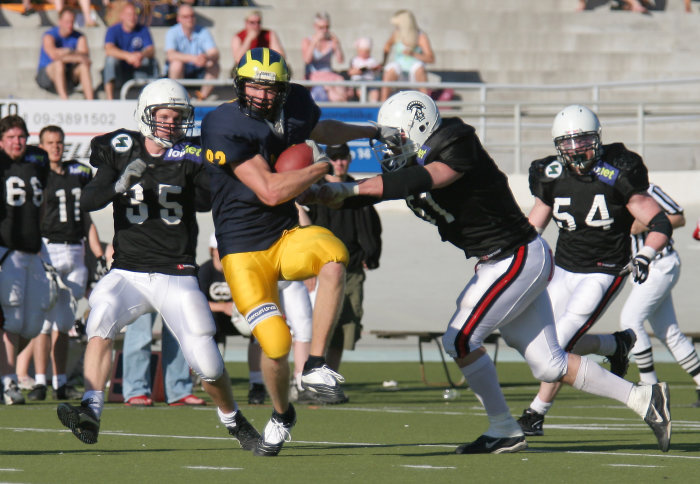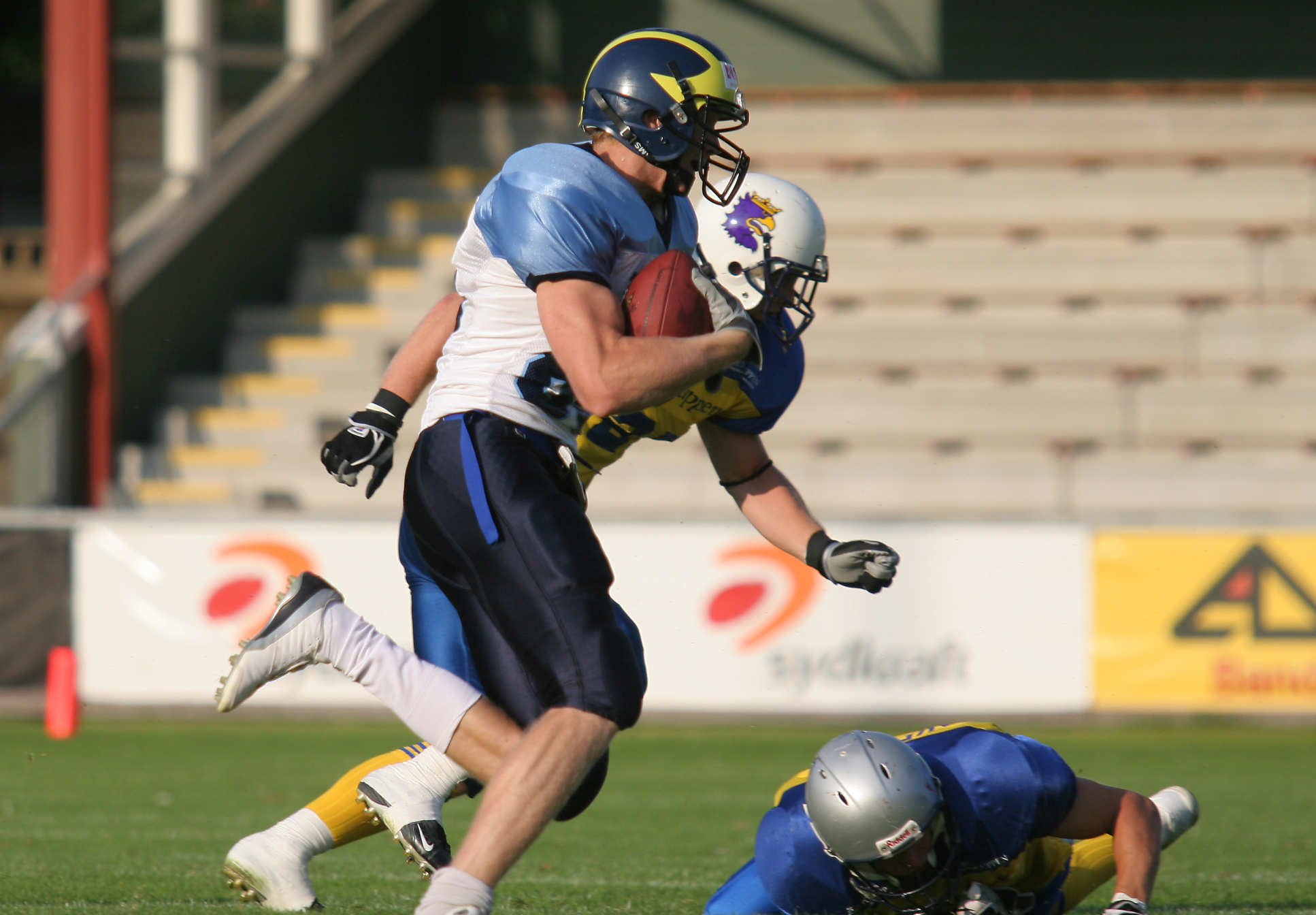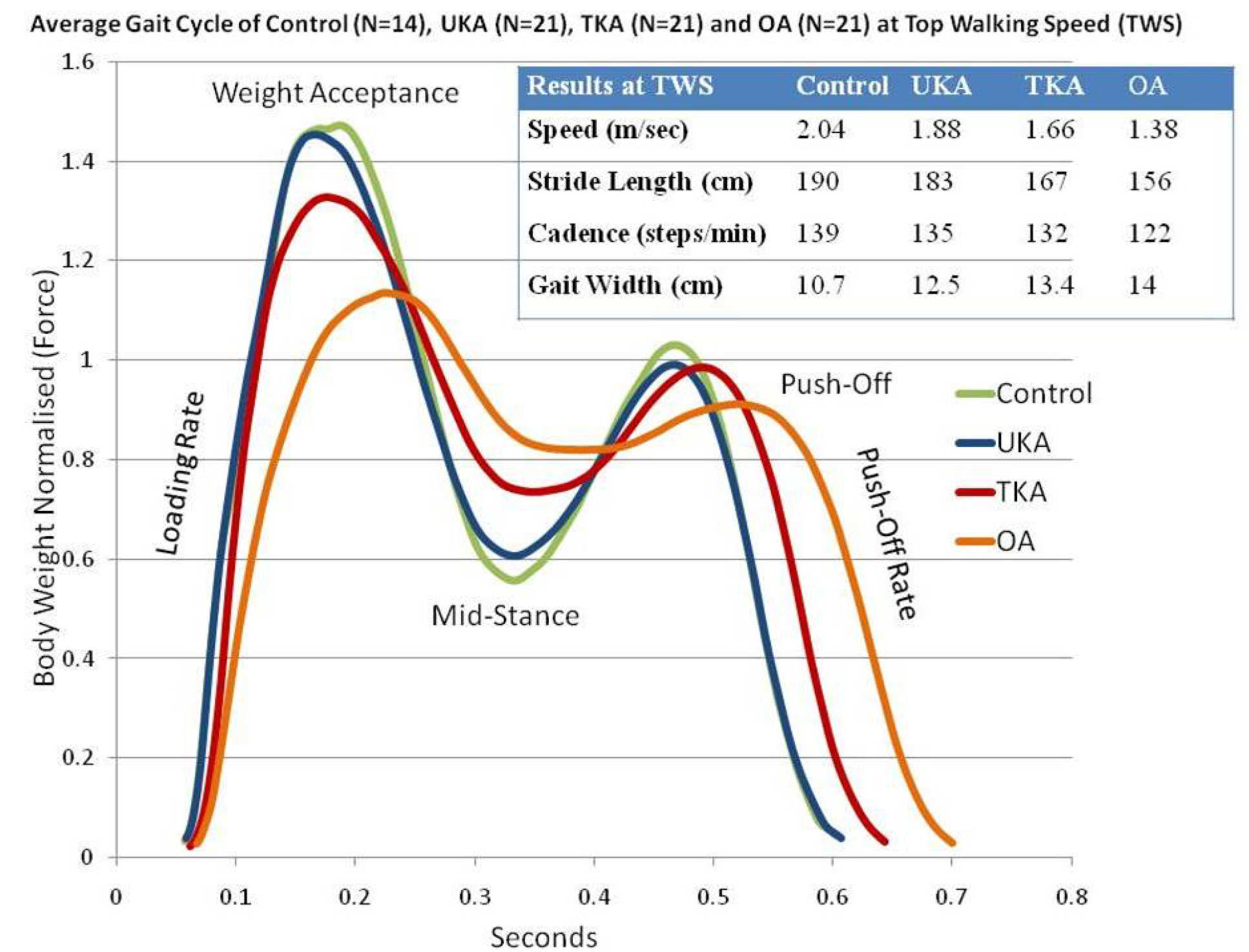
Anatole Wiik on the pitch

Sport and surgery may be two very distinct fields, yet one Imperial trainee surgeon has managed to carve a career out of both.
Anatole Wiik is an NIHR Academic Clinical Lecturer on the North West Thames Trauma and Orthopaedic programme for higher surgical training. As a member of Professor Justin Cobb's MSk Lab at Charing Cross Hospital, his research interests are improving the outcomes of hip and knee surgery with assessment using gait analysis. Prior to his surgical training, Anatole played American football at a professional level.
With the 2018 NFL London Games nearly upon us, we speak to Anatole to find how he transitioned from the gridiron to the operating theatre.
Did you show any promise of being an athlete from childhood?
I was born in Finland, grew up in Antigua and educated in the States, so was exposed to a variety of cultures and experiences from an early age. I enjoyed playing sports in school, however I had a fairly late start to life and didn’t have the typical physique of an American footballer, so the sport wasn’t a natural choice for me initially. Being tall is considered a bonus in American football as players are able to look over the heads of their opponents to pass the ball more efficiently. Fortunately, I had a generous growth spurt during my university days, which my sporting career thanks me for!
When did you first realise you were interested in American football?
My interest in American football was first sparked during high school in Wisconsin – it is by far the most popular team sport in the States. It wasn’t until I was at University in Wisconsin–Milwaukee studying for a BSc in Chemistry, that I first played American football competitively. After trying out for the football team, I made it onto the squad after a year on the bench and intense training. I spent three years playing in between two positions; tight end and wide receiver.
What was the turning point from university team to professional team?
In 2005, while playing in Wisconsin, I was asked by a Finnish team who were scouting for home-grown talent to play for a professional club: the Helsinki Wolverines. We played in the Maple League – the highest level of American football in Finland – and also represented Finland in the European league.
What were your most memorable moments?
There are a couple of standout moments; when we reached the 2005 European League final, only to be narrowly beaten by rivals Sweden. I was named the ‘most valuable player’ during the playoffs and 'league wide receiver all-star', which was quite an honour!

What were some challenging or discouraging moments as an athlete?
I had a tough few years due to a continuous string of injuries; I tore my hamstring and had problems with my knees – a common injury in American football. Inevitably, with a sport that involves athletes colliding with each other at speed, there are a going to be more injuries than other disciplines. My injuries were also a result of overtraining while my muscles were still growing as a youth. The demands of the training schedule were also mentally challenging – we used to train twice daily regularly and sometimes three times a day in the off-season.
What led you to apply to medical school and ultimately specialise in orthopaedics?
I think it was the unfortunate number of injuries I had that drove me to study medicine. Dealing with my injuries ignited an interest in the performance aspect of the human body. Towards the end of my medical degree at the University of the West Indies in Trinidad, I had narrowed down my speciality to orthopaedics, which covers all aspects of the musculoskeletal system.
Do you think the role of medicine in sports has changed since you were training 15 years ago?
Enormously and still continues to as we uncover new research in sports medicine. Even 15 years ago there was a lack of understanding about overtraining. Now, as medical professionals, we encourage athletes to rest and incorporate different elements into their training regime to avoid overtraining.
Today orthopaedics plays a prominent role in professional sports. I see lots of athletes with injuries, so having a first-hand experience of sports-related injuries helps when dealing with these patients.
Can you draw any parallels between your career as an athlete and surgery?
I think there are a number of key similarities. Academics have in fact previously explored the idea that surgeons behave like high performing athletes as they rely on complex physical movements to achieve their goals. An orthopaedic surgeon will perform very similar manoeuvres over and over, such as 300 hip replacements a year. In American football, I played just one position where I did the same manoeuvres in every game. As with surgery, it’s about perfecting these sets of skills.
Orthopaedic surgery requires both physical stamina – as you’ll need to be on your feet for up to 3 hours – and the ability to remain focused. Being an athlete certainly helps with the mechanical side of surgery as we do heavy lifting and manipulations of joints. It is by no means a coincidence that the majority of orthopaedic surgeons that I know did sports in some capacity.
What is your current research at the MSk Lab looking at?
I’m interested in human performance so my current research is on gait analysis using an instrumented treadmill. The below graph is gait at top walking speed. This study demonstrated for the first time in the world that a unicompartmental knee replacement (UKA) – which means only half of a knee is replaced – was better than having a total knee replacement (TKA). It shows that a more conserving operation, keeping the anatomy (ligaments, bone shape) allows the patient to have a more natural gait. These incremental improvements have changed the possibilities for patients suffering knee osteoarthritis – better known as knee OA – which is a real game-changer.

How has playing sport benefited your medical career?
Playing sport has been instrumental to my medical career; sport opens doors, and in my case, it led to me having a career in medicine and ignited a passion for orthopaedics. It’s taught me many intangible life skills, such as teamwork, being a leader, dealing with failure and keeping ahead of the competition. While we’re not all destined to be Olympic athletes, I think the benefits of participating in sport are abundant and would urge anyone to give it a go at some point during their lives.
What does the future hold?
I’m currently halfway to becoming a fully qualified orthopaedic surgeon so that is my priority for now. However, I do see myself coming back to sport one day, whether it’s training, preventing injuries, or even a medic on a professional team. If there will ever be an NFL club in the UK, I will be the first person to send over my CV!
Article text (excluding photos or graphics) © Imperial College London.
Photos and graphics subject to third party copyright used with permission or © Imperial College London.
Reporter

Ellyw Evans
Faculty of Medicine Centre

Contact details
Email: press.office@imperial.ac.uk
Show all stories by this author




Leave a comment
Your comment may be published, displaying your name as you provide it, unless you request otherwise. Your contact details will never be published.